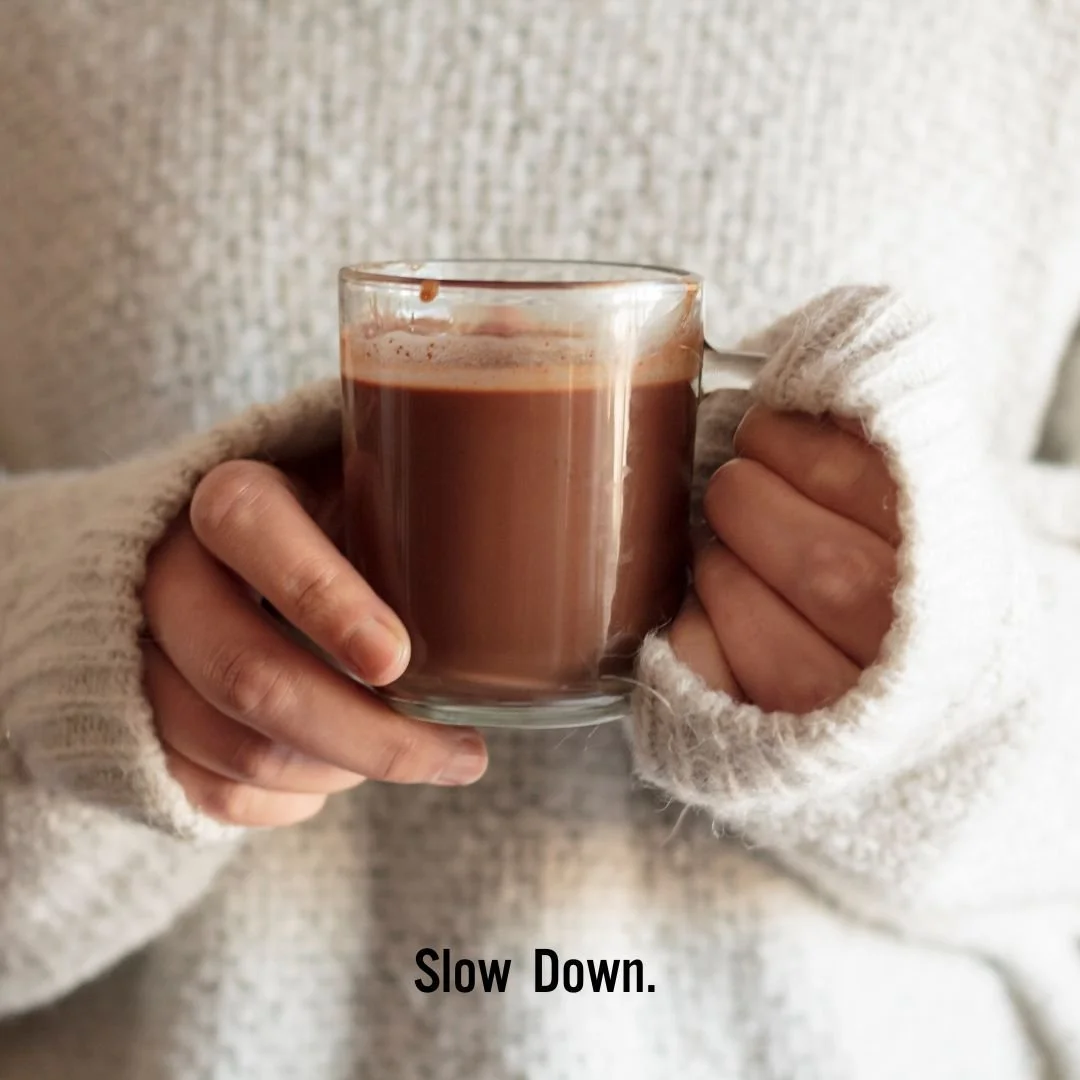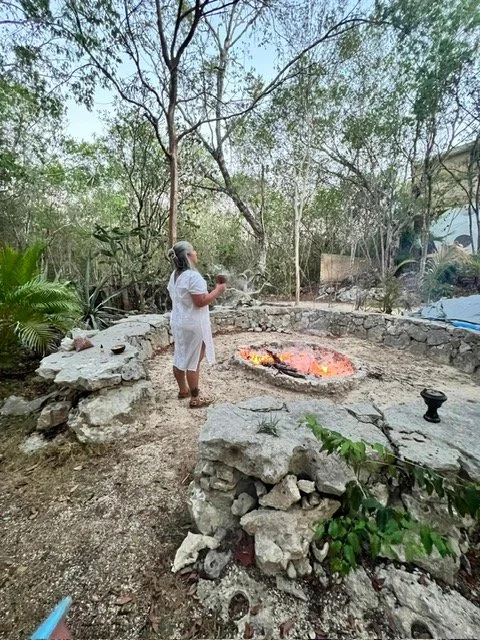Cacao, Culture, & Changemakers
Have you ever walked through the vibrant streets of México’s pueblos mágicos?
Where stone - paved streets are surrounded by casas de color…think bright yellows, deep blues, salmon pinks, and purple hues.
The feeling of comfort.
You continue to explore these pueblos that reflect centuries of history – or revisit the home of your abuelos’ upbringing – all while you take in the aromas of handmade tortillas and spices from local food vendors.
As you stop for a bite to eat, pass by the local cemetery where loved ones are honored, and buy a handcrafted bracelet from the local artisans, you hear the sounds of traditional música echo in the distance – a reminder that ancient traditions coexist with modern life.
Each pueblo holds its own personal history, but together, they form a part of México’s soul — the connection between land, people, and cultura. These experiences carry deeper meaning, as they honor the courage, heritage, and unity that have shaped the country. Each visit to a pueblo magico is an invitation to slow down, reconnect, and embrace the gifts México has brought to the world. What are these gifts?
Historical culinary traditions, cultural ceremonies, and spiritual rituals — just to name a few.
Play your favorite música de México to set the mood and dive into the first gift — el regalo of the Cacao.
What is Cacao?
Cacao is the dried and fully fermented seed of Theobroma cacao — the cacao tree.
“Theobroma” comes from the Greek translation, ‘Food of the Gods’...which is why the ancient Aztec, Mayan, and Toltec cultures held cacao so highly. In fact, cacao was used in sacred rituals, as currency, and in medicine.
Maybe you, or a person in your familia, still uses cacao in some of these ways.The word “cacao” itself comes from the Mayan word, “KaKaWa,” stemming from their god Kukulkan. Kukulkan provided cacao to its people after the creation of humans. Similarly, the Aztecs also received cacao, but from their god, Quetzalcoatl – the god that brought cacao from the sky.
Fast forward to today, cacao fruit is the source of chocolate.
Did you know that it was the indigenous peoples who were one of the first to ground cacao beans, add water to it, and create bitter water known as “chocolhaa?” On the other hand, Aztecs called this bitter water, “Xocolatl.” It’s amazing to know the history of where the words used today originate from!
What Type of Drink Can I Make with Cacao?
With cooler days ahead and Valentines’ Day around the corner, you may be thinking about treats to make for your loved ones. Why not share the gift of a cacao - inspired drink? Here’s something you can try:
The Cacao Spiced Hot Chocolate – think cinnamon, un poco de chili powder, and of course, the cacao.
For this bittersweet drink, you’ll need the following:
2 cups of milk – your choice of milk
¼ cup of dark chocolate (Mexican cacao)
1 tablespoons of cacao powder
½ teaspoon of cinnamon
¼ teaspoon of chili powder (you don’t have to use it, but give it a try!)
1 tablespoon of honey or agave
Un pellizco of sea salt (just a pinch)
Got it written down?
¡Eso!
Make sure la cocina is ready to go, because you’ll need to warm the milk in a saucepan, stir the chocolate and cacao powder until it’s melted, and add the remaining ingredients.
Grab your favorite mug, pour in your creation, and take a sip.
Slowly.
So that you honor the rich history of cacao.
Who Are Some Brands Keeping Cacao Traditions Alive?
Just as homemade cacao drinks can have their perks, stepping outside of la casa to try out the cacao drinks made by other businesses is a great way to support your favorite local vendors and tradición.
One artisanal blend of cacao originates from Dark Matter Coffee – The Sleep Walk.
This collection is amazing because not only do you taste la cultura de México, but you get to know which part of México the coffee comes from. Did I mention the producer and creatives are also highlighted?
Por ejemplo, The Sleep Walk originates from Tuzantán, Chiapas. It’s produced by Agrofloresta Mesoamericana and the artist who illustrated the packaging is Raúl Sisniega.
Talk about celebrating Mexican change makers!
And, there’s more.
Verde Holistic Wellness Studio will be hosting a two-day Cacao making masterclass in Chicago. In this January class, uncover cacao’s ancient wisdom, learn how to prepare it, and unlock its potential for enhanced well-being. Don’t miss this divine experience with Verde.
Another inspirational business is Rufi's Cacao.
Rufi is from San Gabriel Elta in Oaxaca, México. Since she was 5 years old, Rufi would make chocolate with las mujeres in her family. This chocolate is used on its own, added to pan de yema, or turned into mole. She’s also known for hosting cacao ceremony classes, so if you’re ever in Oakland, California, see what events she has coming up!
These are just a few of the many brands who remind us that cacao is more than a drink – it represents heritage, community, and ourselves.
What Are Some Mexican Towns Known for Spirituality and Cacao?
Continuing on the path of cultura, explore some pueblos in México that utilize cacao – whether it’s through medicine, food, or spirituality.
Teotihuacan: San Juan Teotihuacán, México
Teotihuacan is known for its towering pyramids of the sun and moon.
The name, “Teotihuacán” translates to “the city where gods are born” in the Nahuatl language – a language invented by the Aztecs.
It’s considered sacred because Teotihuacan did not have any known inhabitants before the Aztecs.
The Aztecs found this town with preformed pyramids, causing them to believe that gods – not humans – were the only ones capable of creating such large structures.
Just walking through its sacred space has you feeling the energía of ancient Pre - European cultures and their respect for the cosmos. If you’ve had the opportunity to visit Teotihuacan, you probably know what I mean by “energy.” But if you haven’t experienced the spiritual and cultural heart of Mesoamerica, I highly recommend a trip to Teotihuacan at the start of the Spring Equinox in March.
Why the Spring Equinox?
It’s a time where people seek spiritual enlightenment — un momento where both hemispheres get an equal amount of sunlight. It’s also believed that a cosmic energy portal has higher chances of opening — giving people hope for deeper connection, health, and blessings. I am offering travel advice and consultation to help you plan your trip to Teotihuacan. I went for the Spring Equinox in 2023 and fell in love with the experience. Send me a message or fill out this Interest Form to help you plan your special journey.
Comalcalco: Tabasco, México
Another pueblo mágico known for its cacao cultivation is the town of Comalcalco, in the state of Tabasco.
Comalcalco is a Chontal Maya archaeological zone near the Gulf Coast of México. Comalcalco means “place of the house of the griddles” in the Nahuatl language. Not only does Comalcalco mark the western edge of the Mayan civilization, but Comalcalco is the only Mayan city built with brick instead of stone. This pueblo is also known to have tours of the cacao fields, so if you’re the type of person who enjoys getting information while strolling, Comalcalco is for you. Here, you can visit family-owned plantations that have been harvesting cacao for generations.
One well known plantation is Hacienda La Luz. At Hacienda La Luz you can take guided tours where you’ll be shown the traditional ways of turning cacao beans into chocolate. To top it off, the tour ends with having a chocolate drink!
How Can I Bridge Ancestral Wisdom and Modern Wellness?
While there is so much more to speak on México’s spiritual and cultural contributions, this article wouldn’t be complete without pairing the past with the present.
Starting with the past begins with honoring the Mother of Sacred Mushrooms – María Sabina.
María was born in Huautla de Jiménez – the mountains of Oaxaca.
She was a healer, poet, and shaman, known for her work with hongos sagrados – sacred mushrooms.
Being indigenous Mazatec, she would communicate through her mushrooms – or as she called them – her niños santos (holy children).
She would use the hallucinogenic mushrooms to heal those spiritually and physically.
María was known for creating her poems in musical format – making the songs her own – and expressing these rituals with her entire body.
She played a huge role in introducing the world to sacred indigenous practices, and her influence is still felt today. The influence which takes us to examples of today’s modern wellness.
Crystal Dorado of Verde Holistic Wellness Studio is a great ejemplo of showcasing ancient healing with modern lifestyle. Rooted in her indigenous heritage, Crystal makes sure to tie in the wisdom of Mesoamerican traditions into her practice – like her Cacao Ceremonies.
In these sessions, Crystal helps her clients deepen their self - discovery and connection with the power of cacao. It’s a sensory experience honoring the wisdom of ancestral medicine.
One of the beauties of México’s cultura are the teachings on healing, connection, and the power of tradition.
How Can I Support the Gifts Mexico Has Brought to the World?
México’s mágia of unique stories, wisdom of ancient sites, cultivation of cacao, and spiritual practices are just a few of the countless traditions that’s shaped our world. Vida Mia encourages you to support brands like Dark Matters, Rufi’s Cacao, and Verde.
In our next quarterly event, hosted by Vida Mia, Crystal Dorado from Verde will be our special guest to teach us about Cacao Ceremonies. It takes place on Sunday, February 23rd from 1 p.m. to 4 p.m. CT. Reserve your spot here. And get ready to enjoy the beauty of comunidad as we continue to enjoy the timeless gifts México has to offer.
Written by Mayra Gómez-Sánchez

